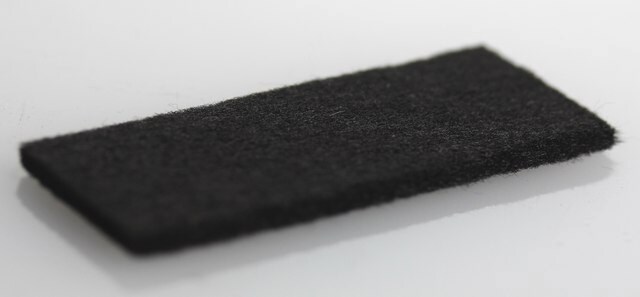719781
Carbon nanofibers
graphitized (iron-free), composed of conical platelets, D × L 100 nm × 20-200 μm
Sinónimos:
PR-25-XT-HHT, Conical carbon nanofibers
About This Item
Productos recomendados
Nivel de calidad
Formulario
powder
características de los productos alternativos más sostenibles
Design for Energy Efficiency
Learn more about the Principles of Green Chemistry.
sustainability
Greener Alternative Product
P × L
100 nm × 20-200 μm
superficie
24 m2/g
impurezas
iron-free
<100 ppm Iron content
diámetro promedio
130 nm
tamaño de poro
0.075 cm3/g average pore volume
124 Å average pore diameter
mp
3652-3697 °C
densidad
1.9 g/mL at 25 °C
densidad aparente
0.5‑3.5 lb/cu.ft
categoría alternativa más sostenible
cadena SMILES
[C]
InChI
1S/C
Clave InChI
OKTJSMMVPCPJKN-UHFFFAOYSA-N
¿Está buscando productos similares? Visita Guía de comparación de productos
Descripción general
Aplicación
Nota de preparación
Información legal
Palabra de señalización
Warning
Frases de peligro
Consejos de prudencia
Clasificaciones de peligro
Eye Irrit. 2 - STOT SE 3
Órganos de actuación
Respiratory system
Código de clase de almacenamiento
11 - Combustible Solids
Clase de riesgo para el agua (WGK)
WGK 3
Punto de inflamabilidad (°F)
Not applicable
Punto de inflamabilidad (°C)
Not applicable
Elija entre una de las versiones más recientes:
¿Ya tiene este producto?
Encuentre la documentación para los productos que ha comprado recientemente en la Biblioteca de documentos.
Artículos
Pyrograf®-III vapor-grown carbon nanofibers are within the class of materials termed multi-walled carbon nanotubes (MWCNTs), and are produced by the floating catalyst method.
3D printing is a type of additive manufacturing that can be used to rapidly fabricate components with highly customizable geometries.
Contenido relacionado
Tissue engineering fabricates tissues cultures from scaffolds, living cells, and biologically active molecules by simulating the microenvironment of the body to repair or replace damaged tissue.
Global Trade Item Number
| Número de referencia del producto (SKU) | GTIN |
|---|---|
| 719781-25G | 4061832855363 |
Nuestro equipo de científicos tiene experiencia en todas las áreas de investigación: Ciencias de la vida, Ciencia de los materiales, Síntesis química, Cromatografía, Analítica y muchas otras.
Póngase en contacto con el Servicio técnico






